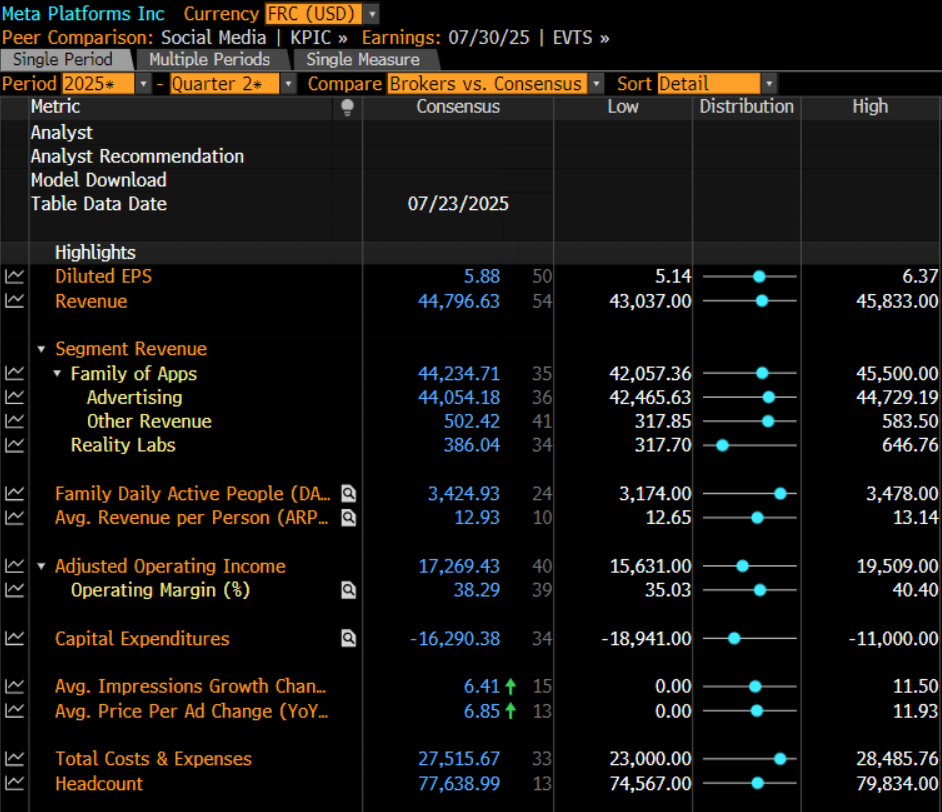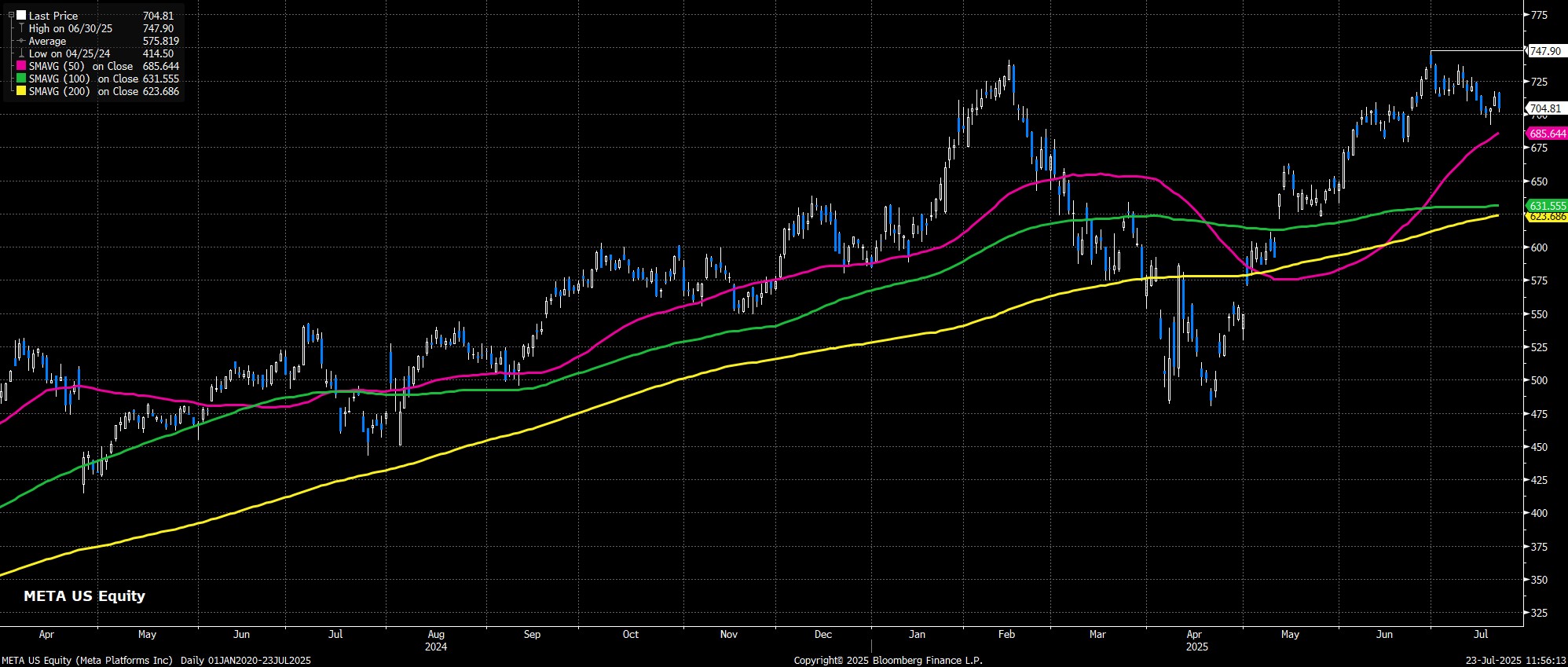- English
- 中文版
Analysis
Consensus expectations for the coming report point to adj. EPS at $5.88, down from the $6.43 seen in fiscal Q1, though such a decline in profitability should come on an increase in quarterly revenues, to $44.8bln, from $42.3bln in Q1. Meta’s guidance, issued three months ago, points to revenue between $42.5bln and $45.5bln. Ad revenue, in particular, is set to print $44bln, supported by a resilient macroeconomic environment underpinning ad spend, despite economic uncertainty remaining at an incredibly high level.
Capex, meanwhile, is seen rising to $16.6bln, from just shy of $13bln in the first three months of the financial year, largely a result of increased spend on AI which remains a key focus area for the firm, particularly after the recent hiring spree for the internal ‘superintelligence’ group.

While past performance is, of course, no guarantee of future returns, the stock has a solid pedigree when it comes to quarterly reports. EPS has surprised to the upside of consensus expectations in every quarter since fiscal Q4 22, while the stock has also enjoyed a post-report rally following three of the last four earnings releases.
This time out, META options price a move of +/-6.2% in the 24 hours following the Q2 25 release, with the stock standing as the 5th largest in both the S&P 500, and Nasdaq 100. Extrapolating that implied move, and assuming the remaining constituents of the index remain unchanged, a post-earnings move in META could move the S&P 500 by up to +/-0.2%, and the Nasdaq 100 by +/-0.4%.
As the report crosses, in addition to the figures themselves, participants will also pay close attention to any guidance that META issue for the quarter ahead. Early estimates for fiscal Q3 see revenues at $43.3bln to $47.3bln, though participants will naturally want to see guidance towards the top end of that range, if not above it. In a similar vein, any substantial post-earnings upgrade in META stock is likely to require not only a beat compared to the aforementioned consensus expectations, but also upgraded guidance, particularly with earnings expectations having been massaged lower through the last quarter.
In terms of levels, the stock comes into the Q2 report lingering just 5% or so below the record highs seen at the back end of June, with some profits having been booked since then.

A well-received report will likely take the stock back towards those prior highs, around $750, before potentially pushing on into uncharted territory above. To the downside, psychological support obviously stands at $700, with the 50-day moving average then lurking below at $685.
The material provided here has not been prepared in accordance with legal requirements designed to promote the independence of investment research and as such is considered to be a marketing communication. Whilst it is not subject to any prohibition on dealing ahead of the dissemination of investment research we will not seek to take any advantage before providing it to our clients. Pepperstone doesn’t represent that the material provided here is accurate, current or complete, and therefore shouldn’t be relied upon as such. The information, whether from a third party or not, isn’t to be considered as a recommendation; or an offer to buy or sell; or the solicitation of an offer to buy or sell any security, financial product or instrument; or to participate in any particular trading strategy. It does not take into account readers’ financial situation or investment objectives. We advise any readers of this content to seek their own advice. Without the approval of Pepperstone, reproduction or redistribution of this information isn’t permitted.
